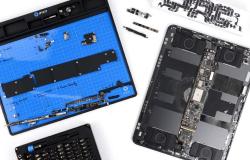The takeoff of Boeing’s Starliner spacecraft, which was to transport NASA astronauts to the International Space Station for the first time, was canceled Monday about two hours before the scheduled launch time. This is due to a technical problem.
An anomaly was identified on a valve of the Atlas V rocket which was to propel the capsule into orbit, announced the launcher manufacturer, the ULA group. “NASA’s priority is security,” immediately reacted the head of the American space agency, Bill Nelson. Takeoff will take place “when we are ready,” he wrote on X.
A new takeoff attempt could theoretically take place on Tuesday, as well as Friday and Saturday, but no new date was immediately announced. Boeing is playing big on this final test mission, which should allow it to join the very private club of spaceships that have transported human beings.
The aerospace industry giant must demonstrate that its vehicle is safe before starting regular missions to the Space Station (ISS) – four years behind SpaceX. American astronauts Butch Wilmore and Suni Williams were scheduled to take off at 10:34 p.m. from Cape Canaveral in Florida (Tuesday 4:34 a.m. in Switzerland).
The preparations initially went smoothly: the astronauts were installed in their seats, the rocket had been filled with fuel, and the weather was ideal. For NASA, which ordered this vehicle ten years ago, the stakes are also high: having a second vehicle in addition to that of SpaceX to transport American astronauts “is very important”, underlined Dana Weigel, responsible for the ISS program.
This capacity will make it possible to better respond to “different emergency scenarios”, for example in the event of a problem on one of the vessels, she explained.
Manual piloting
The success of this mission would also be more than welcome for Boeing, in turmoil over safety problems on its planes, and whose Starliner development program has turned into a saga marked by unpleasant surprises and setbacks.
In 2019, during a first uncrewed test, the capsule could not be placed on the correct trajectory and returned without reaching the ISS. Then in 2021, while the rocket was on the launch pad to retry the flight, a problem with blocked valves on the capsule led to another postponement.
The empty spacecraft finally managed to reach the ISS in May 2022. Boeing then hoped to be able to carry out the first manned flight the same year. But problems discovered late, notably with the parachutes braking the capsule during its return to the atmosphere, again caused delays.
“There were a number of things that were surprises that we had to overcome,” Boeing executive Mark Nappi said at a news conference. But “it made our teams very strong,” he assured. “It is quite typical that the development of a space vehicle for humans takes ten years,” he added.
Beaten by SpaceX
Only a handful of American ships have carried astronauts in the past. SpaceX’s Dragon capsule joined this list in 2020, succeeding the legendary Mercury, Gemini, Apollo and space shuttle programs.
After the latter stopped in 2011, NASA astronauts had to travel aboard Russian Soyuz spacecraft. It is to put an end to this dependence that in 2014, the American space agency signed a contract worth 4.2 billion with Boeing and 2.6 billion with SpaceX for the development of new vessels.
Despite this difference in financing, “SpaceX finished 4 years before” its competitor, the boss of the former start-up, Elon Musk, did not fail to remind us on Monday. “Far too many managers are not technicians at Boeing,” he said. Once Starliner is operational, NASA wants to alternate between SpaceX and Boeing flights to transport its astronauts to the ISS.
After the ISS is retired in 2030, the two ships could be used to transport humans to future private space stations, which several American companies are already planning to build.
ats, afp






